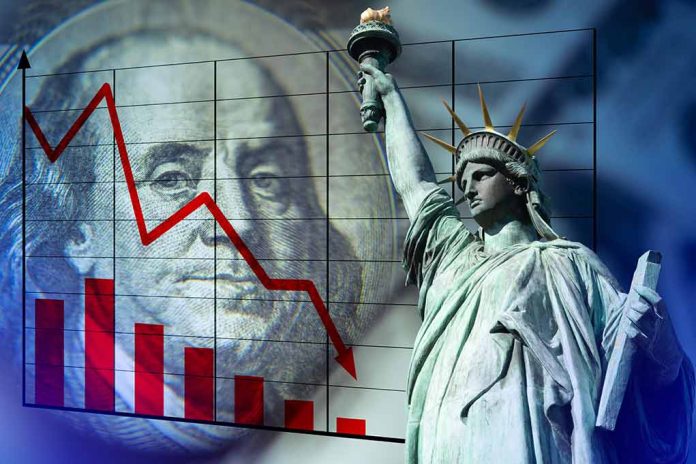
As America’s economic challenges intensify under the Biden administration, many wonder if a return to Trump’s leadership style could provide relief.
At a Glance
- The Biden administration faces scrutiny amid inflation and stagnant wages.
- U.S. Misery Index currently at 6.54%, reflecting economic distress.
- Trump’s leadership style is considered by many as a solution.
- Economic issues have dominated the upcoming 2024 presidential race.
Current Economic Challenges
The Biden administration is under fire for the perceived mishandling of the economy, evident in the U.S. Misery Index today standing at 6.54%. This index, created by Arthur M. Okun, emphasizes the combined rates of unemployment and inflation. Currently, these rates are at 4.1% and 2.44% respectively, highlighting the nation’s economic stress. Critics argue the Biden-Harris administration downplays these challenges, potentially misleading the public on the health of the economy.
The Misery Index has been a tool for understanding the collective anxiety related to economic performance. Historical precedence suggests a strong correlation between high Misery Index scores and electoral losses for the ruling party. Economists suggest that while inflation is concerning, unemployment should be given more weight due to its more significant impact on the populace. Economic sentiment is often influenced by these statistics, severely affecting political landscapes.
Economic Overview Under Biden
Under the Biden administration, the economy has faced significant challenges, with many Americans feeling the strain despite low unemployment figures. While manufacturing jobs have seen some growth, much of this can be attributed to ongoing recovery trends initiated during the Trump administration’s “America First” policies, which incentivized domestic production. However, under Biden, inflation rates surged to a 40-year high, reducing real wages and leaving many families struggling with higher costs of living. Rising prices on essentials like groceries, gas, and housing have outpaced wage growth, eroding disposable incomes and prompting economic dissatisfaction.
Many conservatives argue that Trump’s policies fostered stronger consumer confidence and created the foundation for real wage growth, low taxes, and regulatory cuts that empowered businesses to expand and hire. In contrast, current economic sentiment remains low, as inflation and higher interest rates make it challenging for American families to afford everyday goods and services.
Trump’s Economic Approach
With Biden’s presidency marred by disapproval ratings, the 6.54% Misery Index still paints a distressing picture. Trump’s prior economic policies emphasized reduced regulations and tax cuts, fostering business growth and wage increases. His administration managed to maintain lower gasoline prices and control inflation rates, showing a different economic trajectory. Many argue that Trump’s policies promoted economic stability, a crucial factor as many Americans grapple with current fiscal pressures.
The conversation around Trump’s potential economic benefits is gaining traction as the nation sees the 2024 presidential election. Trump emphasizes sectors he believes thrived under his administration, contrasting sharply with Biden’s record. With opinions still divided, it’s clear that economic issues will be at the forefront of the current elections.





